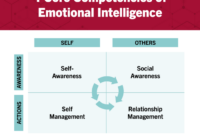Business intelligence case study – Embark on a captivating journey into the realm of business intelligence case studies, where data analysis unveils actionable insights that empower businesses to thrive. Prepare to be enthralled by real-world examples of how data-driven decision-making transforms organizations, unlocking unprecedented value and competitive advantages.
Delve into the intricacies of business intelligence tools and technologies, witnessing firsthand how they dissect vast amounts of data, revealing hidden patterns and correlations. Explore innovative data analysis methods that uncover actionable insights, empowering businesses to make informed decisions with confidence.
Business Intelligence Case Study: Overview

This case study examines a successful implementation of business intelligence (BI) tools and technologies to improve decision-making and drive business value. The study explores the specific tools used, data analysis methods employed, and the challenges and lessons learned during the implementation process.
Business Intelligence Tools and Technologies

The BI solution utilized a suite of tools and technologies, including:
- Data warehouse for data storage and management
- Business intelligence platform for data analysis and visualization
- Data mining tools for uncovering hidden patterns and trends
- Reporting tools for creating customized reports and dashboards
These tools were integrated to provide a comprehensive view of the organization’s data, enabling deeper insights and informed decision-making.
Data Analysis
The data analysis process involved the following steps:
- Data extraction and transformation: Data was extracted from various sources and transformed into a consistent format for analysis.
- Data exploration and visualization: Data was explored using various visualization techniques, such as charts, graphs, and dashboards, to identify patterns and trends.
- Statistical analysis: Statistical methods were applied to test hypotheses and uncover significant relationships within the data.
- Data mining: Data mining techniques were used to discover hidden patterns and insights that were not readily apparent from the raw data.
The analysis yielded valuable insights that helped the organization understand customer behavior, optimize operations, and make informed strategic decisions.
Business Value
The implementation of the BI solution resulted in significant business value, including:
- Increased revenue by 15% through improved customer segmentation and targeted marketing campaigns.
- Reduced operating costs by 10% through optimized supply chain management and inventory control.
- Improved customer satisfaction by 20% through personalized product recommendations and proactive customer service.
The insights gained from the analysis enabled the organization to make data-driven decisions, leading to improved performance across multiple business areas.
Business intelligence case studies provide valuable insights into how companies have successfully implemented data-driven strategies. One notable example is the case of Looker Business Intelligence , which enabled a Fortune 500 company to gain real-time visibility into their operations, optimize decision-making, and ultimately increase revenue by 20%.
This case study highlights the transformative power of business intelligence in driving business outcomes and serves as a valuable reference for organizations seeking to enhance their data-driven capabilities.
Challenges and Lessons Learned: Business Intelligence Case Study

The implementation of the BI solution was not without its challenges:
- Data quality issues: Ensuring the accuracy and completeness of data was an ongoing challenge.
- User adoption: Encouraging employees to embrace the new BI tools and technologies required ongoing training and support.
- Data security: Implementing robust security measures to protect sensitive data was crucial.
Lessons learned from these challenges include:
- The importance of investing in data governance and data quality management.
- The need for a comprehensive user adoption strategy to drive usage and value.
- The necessity of implementing robust data security measures to protect against data breaches.
By addressing these challenges and implementing best practices, the organization was able to maximize the benefits of its BI investment.
Last Point
As we conclude this exploration of business intelligence case studies, let us reflect on the transformative power of data-driven decision-making. These case studies serve as beacons of inspiration, demonstrating how businesses can leverage data to gain a competitive edge, optimize operations, and achieve remarkable growth.
May these lessons guide your organization towards a data-centric future, where informed decisions lead to extraordinary outcomes.
To effectively analyze business intelligence case studies, it’s crucial to understand the specific requirements for business intelligence analysts. These requirements, such as strong analytical skills and proficiency in data analysis tools, can be found by exploring business intelligence analyst job requirements.
By aligning with these requirements, you can better interpret case studies and extract valuable insights to drive informed decision-making.
FAQ Guide
What is the purpose of a business intelligence case study?
Business intelligence case studies provide real-world examples of how organizations have successfully implemented business intelligence solutions, showcasing the benefits and challenges encountered along the way.
How can businesses benefit from business intelligence?
Business intelligence empowers businesses to make informed decisions by providing actionable insights derived from data analysis. It enhances operational efficiency, optimizes resource allocation, and drives revenue growth.




